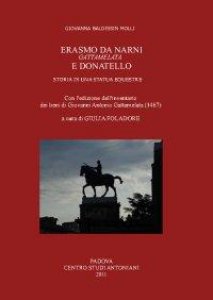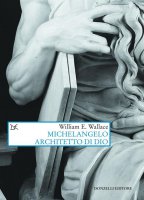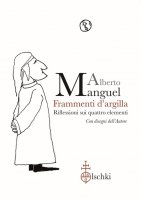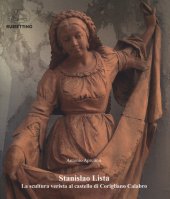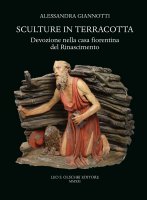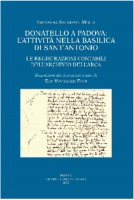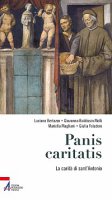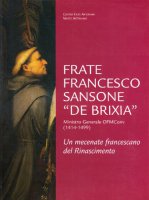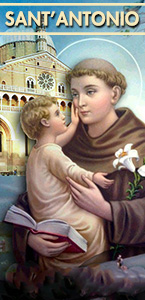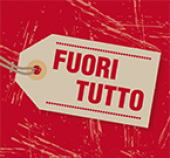Erasmo da Narni, Gattamelata e Donatello: storia di una statua equestre
(Centro studi anton.) [Brossura con alette]EAN 9788885155770
This book on the fifteenth-century condottiere Erasmo da Narni and his equestrian monument in Piazza del Santo at Padua is the result of a formidable amount of research among widely scattered secondary sources on a great variety of subjects. The first and meatiest chapter is dedicated to the figure of the captain and exemplifies a kind of history that has recently become the fashion – namely, history as an account of social networks.
As epitomatic of contemporary systems of communication as the internet or Facebook, su ch accounts have replaced history as a chronicle of major events – chiefly wars and treaties – set forth in chronological order or as a compendium of the biographies of great men or a discussion of influential philosophical or theological ideas. Instead, we are offered a record of the antecedents and descendants of a particular figure, the people he knew and the people he might have known, as well as their connections, in an ever-widening pool, in which – as here – there rises to the surface a multitude of facts of no particular relevance to the matter at hand, but which will certainly be of use and interest to genealogists, the biographers of Renaissance humanists, researchers in Paduan and Venetian political history, and especially the chroniclers of Italian military history. This is not to say that Gattamelata himself is scanted, for we learn as much about him as the scarcity of surviving documents allows. A birthdate of ca. 1370, as is widely credited, or one set fifteen years later, as the author proposes here, are both based on circumstantial evidence – to wit, the existence of children and the course of the captain's career. Although always called Erasmo, Gattamelata's real name was Stefano.
His father, Paolo Angeloni, was not a noble; Paolo Giovio had heard that he was a baker (furnarius), but the presence of braided ropes in the family's blazon suggests confusion with the craft of rope-maker (funarius). Erasmo's marriage to Giacoma di Antonio da Leonessa introduced the captain to a social network that had numerous ramifications of its own. Of particular significance is the fact, newly discovered by the author, that Gentile di Beccarino Brunori da Leonessa, a condottiere of renown, was not Giacoma's brother, but merely a relative of undefined degree (coniunctus). After a military career that began ca. 1400, Erasmo saw service in central Italy and, thanks to the good offices of Biondo Flavio, entered the pay of the Venetian state in February 1434. Principal enemy of Venice in the second half of the 1430s was Milan and hostilities were concentrated at Verona, Lake Garda, and Brescia. His tactically brilliant retreat across the mountains to Verona in the autumn of 1438, by means of which Gattamelata saved the Venetian army, besieged at Brescia by the Milanese under Niccolò Piccinino, together with the defection of Gianfrancesco Gonzaga, led to Erasmo's promotion to supreme command of Venetian forces on 1 October 1438. In the late spring of 1439 Gattamelata established his headquarters at Montagnana; there his survivors and descendants remained for many years.
The captain suffered what appears to have been a stroke in early 1440. He indited his testament on 30 June 1441 and died on 9 January 1443. Solemn funerals, for which Venice decreed the expenditure of 250 ducats, were held at Padua and Venice; orations were delivered by Lauro Quirini and Giovanni Pontano and epitaphs were written by Francesco Barbaro, Cyriacus of Ancona, and the Neapolitan, Giannantonio Pandoni called Porcellio, whose lines were inscribed on the condottiere's tomb. Meanwhile, by Gattamelata's request, his son Giovanni Antonio, and Gentile da Leonessa both received condotte for their leadership of mercenary troops on behalf of Venice on 18 December 1442. But Gentile died on 1 April 1453 and three years after suffering a severe head wound, Giovanni Antonio died intestate on 28 April 1456. After her son's untimely death, Gattamelata's widow, who herself survived until 14 September 1466, counseled by fra Giampietro da Carmegno (detto da Belluno), decided to erect a funerary chapel dedicated to S. Francesco for her husand and son in the Basilica of S. Antonio.
On 17 December 1456 contracts were made between Giacoma's son-in-law, Lancilotto di Luca Antonio da Narni, on the one hand, and a mason and a sculptor, on the other, which envisaged a chapel with two tombs containing effigies of father and son, one wearing ancient armor and the other dressed in modern armor. The sculptor in question was the Paduan Gregorio di Allegretto who, despite the terms of his commission, evidently did not make both effigies which differ fundamentally in quality and style. This problem, however, does not come within the purview of the present book. Nor does that of the altarpiece of the Cappella Gattesca, with which a panel in the National Gallery of Art at Washington representing SS. Anthony Abbot and Bernardino attributed to Jacopo Bellini, with or without the collaboration of his sons, and predella panels of the Adoration of the Magi (Ferrara, Pinacoteca Nazionale), Crucifixion (Venice, Museo Civico Correr), and Descent into Limbo (Padua, Museo Civico) have been hypothetically identified. By September 1458 the masonry and sculpture of the chapel were complete, but it was many years before its walls were frescoed.
My account gives a very meagre idea of the riches of this chapter, which contains discussions of Antonio di Ranuccio dei conti di Marsciano who married Gattamelata's daughter Todeschina, Lionello di Paolo Lion and his son Francesco who married Gentile da Leonessa's daughter Milla, Caterina di Giovanni Antonio and her husband Francesco di Antonio Francesco Dotti whom she married at the age of four. (Here some family trees would have been helpful.) Among Erasmo's acquaintances we find Taddeo di Azzo d'Este and the latter's son Bertoldo who married Giacoma di Gentile da Leonessa, Galeotto di Stefano Marzio da Narni, author of the epitaph on the tomb of Giovanni Antonio, and the physician Antonio Cermisone. Useful information concerning the Venetians Francesco Barbaro, Jacopo Antonio Marcello and Pietro Donato, Bishop of Padua is here as well. Chapter 2 treats of the profession of mercenary soldier under the Venetians and, while presenting no startling discoveries, nevertheless, contains a cogent and very interesting account of the social status and origins of condottieri, their network of alliances, the effect of the introduction of firearms, the nature of mercenary contracts, and the control that Venice exercised on its mercenary leaders through the office of Provveditore Generale.
With chapter 3 we arrive at the Cenotaph of Gattamelata erected by Donatello between 1444 and 1453 in the form of an equestrian monument. According to the author, the choice of Donatello for the commission necessarily implicates Cosimo de' Medici, the sculptor's most constant and benevolent patron, although no testimony of Medici involvement survives; indeed, the epitaph on Erasmo's tomb credits the Venetian Senate with the erection of his equestrian monument and documents prove that the bills for it were paid by Gattamelata's heirs. But Cosimo enjoyed an amicable relationship with Doge Francesco Foscari and was acquainted with Erasmo himself, as five of the captain's letters demonstrate. Indeed, it is widely recognized that the closest precedent of the Gattamelata monument was the fresco of the condottiere John Hawkwood in the Florentine Duomo. As it happens, Erasmo da Narni had dedicated a silver ex voto of himself on horseback to the altar of the Annunziata in the church of that name at Florence and the 1492 inventory of Palazzo Medici, made after the death of Lorenzo, recorded two portraits (their medium is not specified) of Francesco Sforza and Gattamelata, the latter by a Venetian artist, for whose commission Baldissin Molli thinks Cosimo was responsible himself.
Donatello was last recorded in Florence on 15 October 1443 and had arrived in Padua by 24 January 1444, when he was already at work on the bronze Crucifix for the basilica. In attempting to date the manufacture of Erasmo's equestrian statue, the author refers to payments of 1447 for work on its pedestal as proof that the sculpture it supports had already been cast, supposing with Alessandro Parronchi that if Donatello executed the bronze elements before turning to the stonework in the Santo's high altar, as we know he did, he would have followed the same procedure in the Gattamelata monument. But there is no need to resort to such dubious assumptions when reimbursements for the acquisition of copper and tin for casting the horse's body, for the transport of the models of the horse and rider from Donatello's house to the foundry and for the return of the horse's rump to Donatello's house after it had been cast, as well as payments to Andrea delle Caldiere for its casting, are documented in May and June of 1447. Probably intended initially as a tomb, the Gattamelata monument assumed a purely commemorative function when, after the premature death of her son, Giacoma da Leonessa undertook construction of a funerary chapel. Evidently work ceased for several years, for the cenotaph was still not installed by the middle of 1453 when Donatello obligated himself to install the horse and rider on its pedestal by the end of the coming September.
This promise is contained in an agreement between the sculptor and the representatives of Giovanni Antonio, as Erasmo's heir, to have Donatello's work appraised, in order to determine the master's total recompense. The experts chosen by the two parties would seem to have merited as thorough an investigation as any of the peripheral members of the condottiere's social network and the author's knowledge of Renaissance oreficieria enabled her to recognize goldsmiths in two of them, but otherwise very little information is forthcoming. Acting on behalf of Giovanni Antonio was the experienced woodcarver Jacopo Moronzone, two goldsmiths by the names of Antonio Sesto and Giovanni Testa, and Michele di Zambon painter, whereas Donatello chose Gioffredo da Brazzo, Pantaleone lapicida, Niccolò Del Sole, and Bartolomeo di Zambon lapicida. Michele di Zambon is, of course, the well-known painter Michele Giambono and no relation to Bartolomeo di Zambon, the Venetian sculptor Bartolomeo di Giovanni Bon. Pantaleone is not Bartolomeo's relative either but Pantaleone di Paolo, documented at frequent intervals between 1424 and his death in 1465. Not only did he collaborate with Bartolomeo Bon on stonemasonry for the newly constructed church of S. Maria della Carità in Venice and much later on the Arco Foscari of the Ducal Palace, but he supplied marbles in 1448 and 1449 for the High Altar of the Santo and in 1453 carved the frame of the door leading to the Carità's sacristy, for whose lunette Donatello furnished a Madonna.
Niccolò Del Sole must be the painter Niccolò Del Sole who in 1460 was acting as the testamentary executor of the late Zuane da Napoli intaiador. Gioffredo da Brazzo is the goldsmith Zoffredo da Brazzo (presumably, the island of Brac´ off the coast of Split in Dalmatia) who, as Guardian Grande of the Scuola Grande di S. Marco, received permission in July of 1437 from the Council of Ten and the Maggior Consiglio to enlarge the fondamenta of the confraternity, recently transferred from S. Croce to SS. Giovanni e Paolo, and on 4 August 1437 contracted with Giovanni Bon to carve the lunette of the scuola's new portal. In fact, it is he who is depicted kissing the hand of St. Mark in the relief of the lunette in the current building's main portal. Reëlected Guardian Grande in 1443, Zoffredo conceived several other decorative projects for the scuola, as well as the construction of an adjacent hospital and rest home. In sum, at least three of Donatello's four experts knew one another and were either practitioners or patrons of stonecarving. Giovanni Antonio's experts, by contrast, were linked by their familiarity with the working of gold, either as goldsmiths or as painters of gold ground panels and gilded wooden sculptures.
Why this should be so, when no documents or early sources record the gilding of Erasmo da Narni's portrait, is puzzling. Most interesting for the art historian are the author's discussions of the breed and gait of Gattamelata's steed, his armor – a fantastic mixture of antique and contemporary elements – and the condottiere's physiognomy in which, expanding upon an observation of Peter Meller's, she traces the implications for a military hero of his resemblance to a lion. What unfortunately is missing from this book is an analysis of the material and technique involved in casting the first surviving bronze equestrian monument erected since antiquity. This is not the author's fault; such information, after all, is necessarily dependent on the monument's restoration. Instead, the photographs made specially for this book, which show the surface of the bronze corroded and discolored by atmospheric pollution and disgustingly besmirched by pigeon excrement, make evident the shameful disregard suffered by this irreplaceable vestige of the past and its desperate need for restoration.
It is amazing to me, who come from a country where a sculpture as valuable as this would be cared for in the controlled environment of a museum and replaced by a cast, that the Gattamelata cenotaph can inspire the writing of a book, while the work itself is left to perish from neglect.
NOTE
E. Demo, “Tengo dinari li quali trafego in lo me bancho”. L'attività di Giovanni Orsato, banchiere padovano del XV secolo, «Studi Storici Luigi Simeoni», LIV (2004), pp. 356-357, docs. 2, 3, 9, 20).
For Pantaleone di Paolo, see W. Wolters, La scultura veneziana gotica 1300/1460, Venice, 1976, I, p. 266, and A. Markham Schulz, A Venetian sculpture by Lombardo sculptors: Filippo Solari, Andrea da Carona, and the Franco altar for S. Pietro di Castello, Venice, «Burlington Magazine», CXXXIX (1997), pp. 836 and 839-840.
For Niccolò Dal Sole, see A. Markham Schulz, Woodcarving and Woodcarvers in Venice, 1350-1550, Florence 2011, p. 118, no. 287.
For Zoffredo da Brazzo, see G. Fogolari, Ancora di Bartolomeo Bon scultore veneziano, «L'arte», XXXV (1932), pp. 30-33, and Ph. Lindsay Sohm, The Scuola Grande di San Marco, 1437-1550: the Architecture of a Venetian Lay Confraternity, Ph. D. Diss., The Johns Hopkins University, Baltimore MD, 1978, pp. 85-86, 251, doc. 6 and 257, doc. 13.
Tratto dalla Rivista "Il Santo. Rivista francescana di storia dottrina arte" LII, 2012, fasc. 1-2
(http://www.centrostudiantoniani.it)


